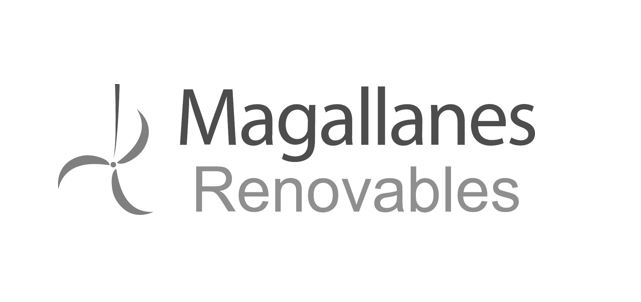American Tidal Energy Project (ATEP)
Timescale: July 24 – April 25
Funder: US Department of Energy (DOE) – EMEC subcontracted by ORPC
Location: US based project, EMEC input delivered remotely
Website: ATEP website
About ATEP
ORPC are intending to develop a tidal energy site at the Cook Inlet, near Anchorage in Alaska, USA. The American Tidal Energy Project (ATEP) aims to develop an Alaska-based 1-5 MW tidal site that integrates the best available tidal energy technologies to provide power to the grid and alternative end users. The site will be located in Cook Inlet in Alaska off the coast of East Foreland on the Kenai Peninsula. Measured water velocity at East Foreland can reach up to 4 meters per second (approximately 9 miles per hour).
Tidal power in Cook Inlet can provide over 100% of electricity needs in the South Central Alaska region. The tidal energy resource potential of Cook Inlet is estimated to be 80 terawatt hours per year (TWh/yr)—this is more than 15 times the present-day electricity consumption of the Alaska Railbelt grid running 700 miles from Fairbanks to Homer.
ORPC has selected two tidal energy technologies for potential further development in the project:
 |
 |
| Proteus – AR Series (see fact sheet) | ORPC – TidGen Power System (see fact sheet) |
DOE funded project
In Feb 2024, ATEP was one of two projects selected by the US Department of Energy (DOE) to receive $3 million each for the development of a tidal energy research, development, and demonstration pilot site. This first phase of funding covered both projects to evaluate proposed sites and plan licensing, environmental monitoring, site health and safety, commercialisation, stakeholder engagement, community benefits, supply chain procurement, and technology selection and qualification. This first phase of funding will lead up to submitting the necessary license and/or permit applications to regulators.
After the first phase, DOE will select one project to proceed through the remaining four phases and receive up to an additional $29 million, concluding with testing and operation of the tidal energy device(s).
Partners
- ORPC – Lead partner, EMEC client, technology developer, site developer
- Proteus Marine Renewables – Technology developer
- Tidal Energy Corp – coordinated technology selection planning and process
- EMEC – subcontracted to support technology selection through technology benchmarking and power performance assessment
EMEC’s role
EMEC supported the technology selection and qualification process for ATEP, providing the following services and reports.
Technology assessment
Using our Technology Assessment Process (TAP) and Technology Benchmarking Assessment Tool, we undertook a holistic assessment of the technology readiness level (TRL), commercial readiness level (CRL) and technology performance level (TPL) for ORPC’s TidGen and Proteus Marine Renewables’ AR-series tidal energy converters (TECs).
We provided a Technology Assessment Report which will be used by Tidal Energy Corporation to make a final decision on technology selection for the site.
Note: In this case the technology assessment process was not specific to the ATEP site at Cook Inlet, Alaska, as Tidal Energy Corporation will undertake a site-specific assessment of technology suitability as part of its wider technology selection process.
Power performance assessment
We calculated the annual energy production (AEP) for each tidal energy technology using resource model data. The estimated average AEP and corresponding capacity factor for each TEC was presented by EMEC in an AEP calculation report.
The AEP calculations were conducted following the guidance in IEC TS 62600-200 “Electricity producing tidal converters – Power performance assessment” and IEC TS 62600-201 “Tidal energy resource assessment and characterisation” as closely as possible.
The methodology used hub height current speed calculated from modelling by the Pacific Northwest National Laboratory (PNNL) for a specific location agreed with the developers. Although the geographic location is the same for each developer, the hub heights were taken at realistic depths for each developer. Power curves and performance assessment methodologies were provided by each developer for their proposed TEC and the datasets were then combined to calculate AEP values for each TEC. As part of this exercise, the resource modelling and the methodologies behind each developer’s power curves were reviewed.
Next steps
Following the technology selection process supported by EMEC and Tidal Energy Corporation, both Proteus and ORPC tidal technologies were selected to move forward as part of the American Tidal Energy Project.
Between April and June 2025, ATEP partners will learn if the project has been awarded $29 million to progress to Phases 2-5. DOE will select one project to proceed through the remaining four phases and receive up to an additional $29 million, concluding with testing and operation of the tidal energy device(s).
If successful, the next steps include:
- Summer 2025 and 2026 field work in Cook Inlet to inform FERC licensing, state and local permitting, and final engineering design for chosen tidal technologies.
- Continued outreach and collaboration with regulatory agencies, non-profits, government, legislative organizations, and Kenai Peninsula community groups.
Related news
Feb 2024 | US DOE allocates $6 million for development of tidal energy demo pilot site






